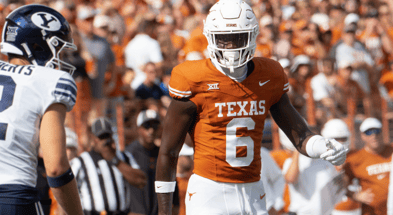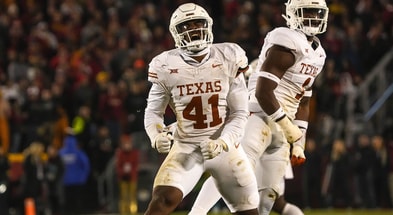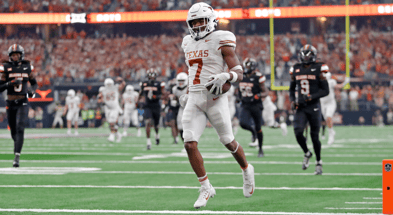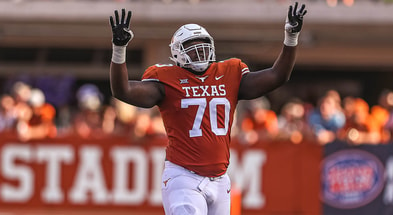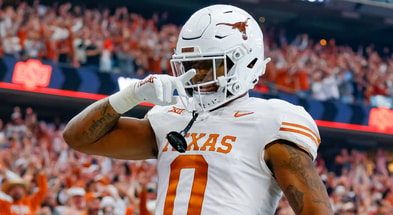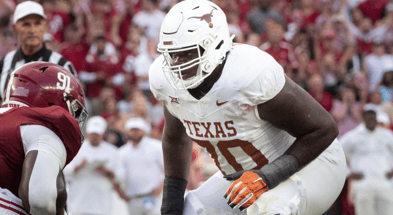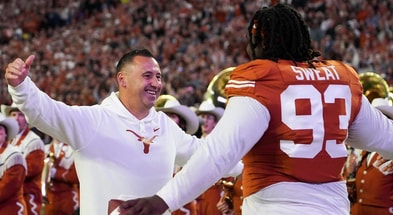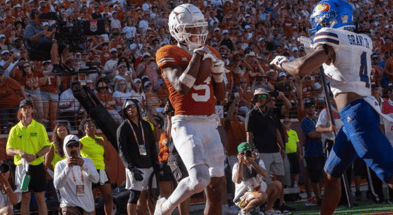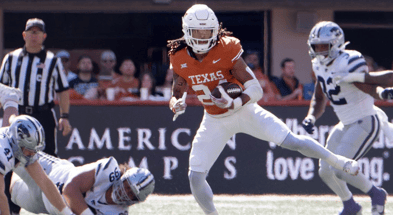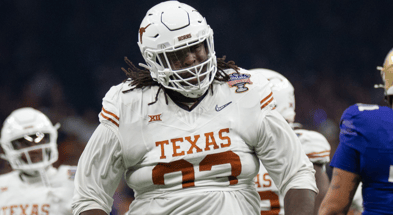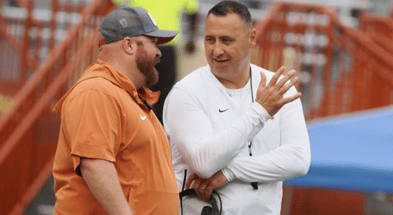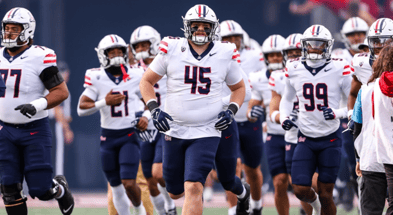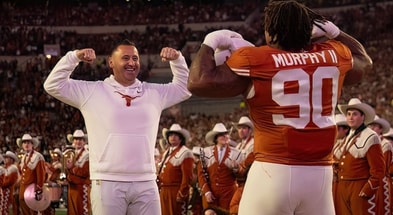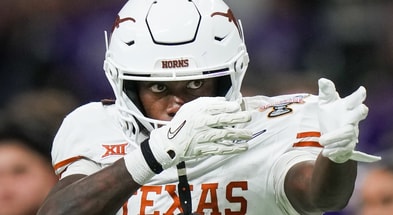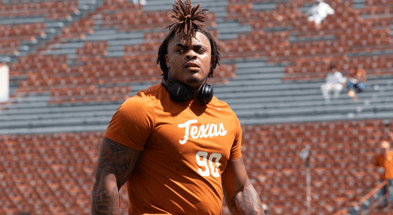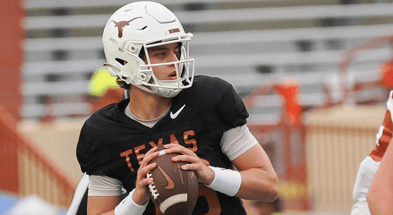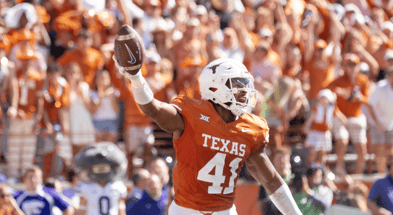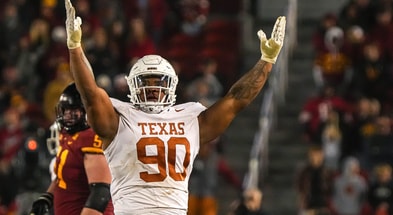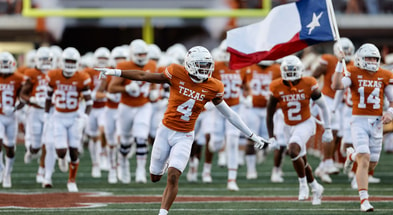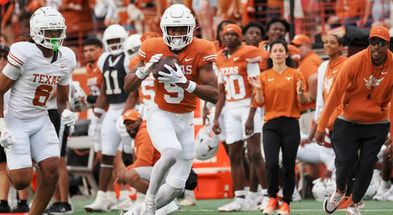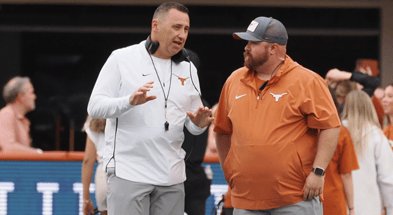The Pete Kwiatkowski defensive glossary
Identifying and explaining the various positions and tactics of the Texas defense can be pretty difficult. Some fans remember back years over multiple defensive coordinators who had different formations, positional designations, roles, coverages, and tactics which defined their teams.
[Join Inside Texas today and get the best Texas Longhorns insider team info and recruiting intel!]
One minute you think you know what a nickel is, then the message board is calling it a super nickel, then a new coach is calling it a “Star” and it seems like something has changed but maybe you don’t know exactly what any of that means. Or perhaps you don’t even know what a nickel is in the first place and are new to technical football discussion.
Either way, today is your day.
Allow me to offer a glossary and basic explanation of the Texas defense as it currently exists under Pete Kwiatkowski. It’ll inevitably change with another defensive coordinator, and perhaps even with PK himself in this coming year, but here’s a reference point to hang your hat on for now.
The 2-4-5
Here’s how the Texas defense typically lined up last year against a fairly standard spread formation:
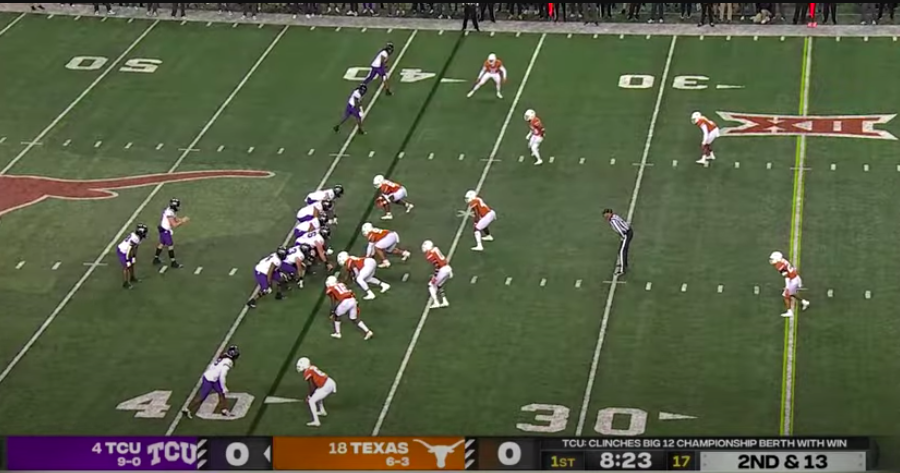
Here’s how that looks when I draw it on one of my diagrams.
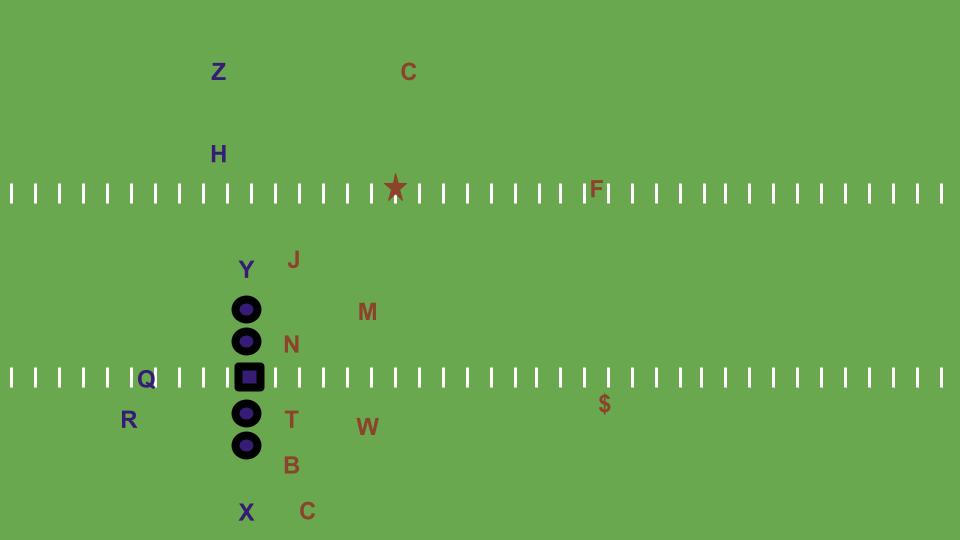
So who’s who in that diagram and which guys are supposed to do what within the defense? Let’s start on the bottom and work our way up.
First, field vs boundary. College football’s hash marks (the white lines across the field measuring yardage) are wider apart than in the NFL and when the ball is snapped on a hash mark you end up with a very unequal amount of space on either side of the center snapping the ball. The short side of the field is referred to as “the boundary” and the wider side is referred to as “the field.” The difference in spacing is so intense many defenses, including Texas, align particular defensive players to always be to the field or boundary side so they can specialize in those assignments (and always know where to line up).
Boundary cornerback (C): That’s the cornerback on bottom, who aligns to whichever side of the field is shorter. Your boundary cornerback is often a bigger, more physical guy because he needs to be able to jam up and deny easy routes to the receiver as the proximity from the quarterback is so close. If you give a boundary receiver space, him and his quarterback can chew you up because even noodle-armed quarterbacks can zip in some throws when the target is so close.
Texas used Ryan Watts here in 2022 and routinely had him press up on routes, or at least line up in press before bailing late before the snap before the quarterback could signal in a route to take advantage of off coverage. Terrance Brooks will probably end up here eventually.
“Buck” Edge (B): Texas plays with two Edges, the Jack and the Buck. The Buck lines up to the boundary side and is the smaller, weakside pass-rusher of the two players. Because he’s to the shorter side he tends to drop back into coverage more often, either into the boundary flat or straight behind the line. Ovie Oghoufo played the position in 2022, this is where a prospect like Colin Simmons would inevitably fit.
Weakside “Will” linebacker (W): Texas plays with two inside linebackers, the “Mike” and the “Will.” The Will actually plays to the shorter side of the field while the Mike lines up to the wide side. Because he’s in smaller spaces the Will consequently may be more like a traditional Mike, serving as a big hitter who thrives in the box against the run and blitzing from different angles. DeMarvion Overshown was the 2022 Will, Anthony Hill is expected to ultimately play this role.
Defensive tackle (T): Texas plays with two defensive tackles, one of them is usually in a 3-technique whom we’re referring to here. Technically a 3-technique is a “break through the B-gap and disrupt plays in the backfield” sort of player but because Texas plays with two Edges aligned a little wider, they expect double teams to come at the 3-technique and the guy manning that position needs to be ready to handle a 3-technique. T’Vondre Sweat and Moro Ojomo split time at 3-technique in 2022, Jaray Bledsoe will probably grow into this role with time but the nature of Texas’ 2-4-5 fronts is to use bigger, “nose tackle types” at either spot.
Strong/boundary safety ($): The boundary safety often draws very different assignments from the free safety. He’s playing in less space, doesn’t have a slot receiver to align to as often, and he’s usually closer to the box and thus routinely a player who will be positioned to arrive in run support. If there’s one spot in the secondary where Texas would still play a big, traditional safety it’d be here. Last year they relied on rangy and wiry Jerrin Thompson due to his physical play but expect him to slide over and the more compact Jalen Catalon to end up in this role.
Nose tackle (N): The nose tackle for Texas can be more or less traditional depending on who’s in the role. Again, with the wider edges, the 3-technique often gets placed at the point of attack where he can force double teams and free up the Edges to knife into the backfield. Texas will often use a 2i-technique for their nose tackle, playing him on the inside shoulder of a guard, and he may not draw a double team there. However the nose still gets double teams and often has a demanding task to try and two-gap a guard, who are generally among the strongest and nastiest offensive players on the field. Texas still wants a powerful, strong player here. Keondre Coburn played nose the last few years, Byron Murphy will take over there in 2023.
Middle “Mike” linebacker (M): The Mike linebacker isn’t so terribly different from the Will position, but because he’s aligned to the wide side of the field his coverage assignments at times can require that he exhibit some lateral range and take good drops. Jaylan Ford has become an exemplar of coverage at the position, Liona Lefau is the heir apparent because of his comfort in the same assignments.
“Jack” Edge (J): The “Jack” Edge always aligns to the wide side of the field, which makes his role a bit different than the Buck. He needs to be a firm and ideally particularly strong run defender as his positioning allows him to restrict the ability of teams to run the ball to the wide side of the field and get their runners into open spaces. Theoretically the Jack could drop into coverage like the Buck but it’s been more common for him to slide inside into D-line alignments like as a 5-technique (outside shoulder of the offensive tackle) or even a 4i-technique (inside shoulder of the offensive tackle). Barryn Sorrell plays the role currently, Colton Vasek may fit here in the future.
“Star” nickel (*): There have been a lot of different types of nickels in college football since Oklahoma slid the 6-foot-0, 230 pound Roy Williams into the role back in 2000. These days the best practice is generally to play a versatile but true cornerback to allow for coverage flexibility, as opposed to using a smaller linebacker or bigger safety who might need to be covered up against dangerous slot receivers. Texas uses Jahdae Barron here and Jaylon Guilbeau is generally considered to be what’s next at the position.
Free/field safety (F): The free safety is more routinely picking up slot receivers down the field delivered to him by the nickel/Star, or even dropping down to pick those guys up in man coverage himself. It’s a more coverage-oriented position in general than boundary safety, even though many of the rules and assignments are similar, simply because he’s more often removed from the action out in open grass. A physical safety who is an asset near the box may not be suited to free safety and a rangy free safety may not be a great asset in the boundary, but it’s not uncommon for guys to be able to do both. Jerrin Thompson may play here in 2023 after Anthony Cook held the role in 2022 or else converted cornerback Kitan Crawford may own the role.
Field cornerback (C): Last but not least, the field cornerback plays in wide open spaces pretty far removed from the action in the run game. He might need to be physical in taking on blocks or making tackles on perimeter screens, but otherwise he’s the most specialized and strictly coverage player on the team. Ideally he can own playing in wider spaces and do so without a ton of help from the free safety. D’Shawn Jamison played here in 2022, Gavin Holmes and Terrance Brooks will battle for the starting role in 2023.
Basics of the defense
One of the big questions that comes up for Texas is “what’s a 2-4-5 and how is that different from a 4-2-5?”
Your mileage on the answer will vary. If you don’t particularly care about nuances or particulars, then just don’t worry about it. They’re basically the same. Theoretically the 2-4-5 moniker indicates that instead of the defensive end/Edges being strictly defensive lineman, they’re actually cross-trained and able to drop into coverage and be hybrid linebackers. Texas didn’t actually do a great deal of that a year ago but that’s the idea. Another nuance is that PK’s 2-4-5 will often play both “ends” pretty wide and ask a lot of both defensive tackles in terms of eating space and taking on double teams, but ultimately PK uses a few different fronts and will move guys around into different techniques based on their own strengths and the needs of the moment.
Texas’ base defense is Match quarters coverage, which could have its own article. Suffice to say, it’s a two-deep safety coverage in which each defender has rules which tell him who to cover. The cornerbacks are often playing with simple rules that basically amount to man coverage on the outside receivers, the safeties have rules that simplify to “cover the slot receiver if he goes deep, otherwise help on anything deep or go stop the run.” A particular feature of Texas’ quarters coverage is that the safeties play fairly deep, 10-15 yards off the ball, but they don’t back-pedal. They stay flat-footed to read the play and then run to where the rules tell them to be. Linebackers play more of a zone-match technique, “cover anyone that enters this zone” or “cover whoever ends up as the third receiver from the sideline.”
There are a few different variations of match quarters which govern the rules the defenders apply when determining who they’re supposed to cover. Texas also embraces split field coverage, which means they can play a different coverage with a different rule set to either side of the field. The boundary safety and cornerback have one set of rules they apply while the Star, field safety, and field cornerback can play by different rules. This is made possible by having a cornerback at nickel with a diverse skill set.
A huge advantage Texas has leaned into with split field coverage is that they could play Match quarters to one side of the field but then call a zero blitz to the other. Perhaps the quarterback realizes late before the snap the boundary cornerback is coming unblocked and that receiver is being picked up by the boundary safety. So he looks for a quick outlet to the field only to see Texas in a conservative two-high coverage there. Suddenly he has no time to get through a progression and his plan is spoiled, the play is dead and all there is to do is avoid a worse case scenario like a sack or turnover.
Those blitzes tended to work better on standard downs than passing downs, the latter of which may feature a play call designed to beat the blitz, but they were essential to Texas in 2022.
That’s the PK Texas defense in a nutshell.

